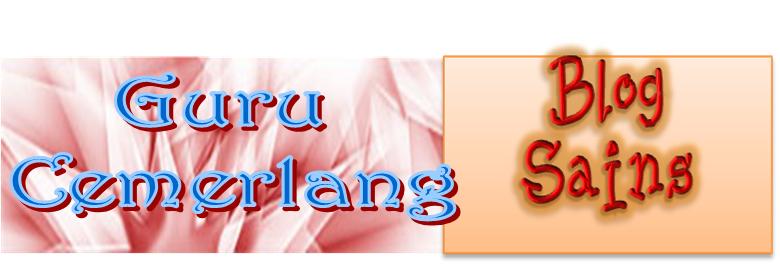Sunday, 13 June 2010
Saturday, 12 June 2010
Friday, 11 June 2010
Sunday, 30 May 2010
KPS ( Science Process Skills )
Tips to Score A
018-Science
Upsr 2010
Science
FACILITATOR;
ZAZOLNIZAM ZAKARIA
GURU CEMERLANG SAINS
MAJLIS GURU CEMERLANG MALAYSIA
Bahagian A
4 langkah utama :
1. Pastikan anda membaca soalan sekali lalu. Pastikan anda tahu apa yang disoal.
2. Baca sekali lagi dan tandakan kata kunci soalan.
3. Tentukan tajuk yang disoal.
4. Abaikan jawapan pengganggu.
Bahagian B
5 langkah utama :
1. Pastikan anda membaca soalan sekali lalu. Pastikan anda tahu kehendak soalan.
2. Baca sekali lagi dan tandakan kata kunci soalan.
3. Tentukan dan tuliskan pemboleh ubah ( variables) dalam soalan tersebut.
4. Tentukan tajuk yang disoal.
5. Tulis jawapan mengikut format jawapan yang betul.
MAKING INFERENCE/ MEMBUAT INFERENS
- Using information from observations to make reasonable early conclusions.
- Menggunakan data dari pemerhatian untuk membuat penerangan awal.
- Making various possible interpretations from single observation
- Memberikan pelbagai andaian dari pemerhatian tunggal
- Using inferences as a tool to determine the appropriate additional observations.
- Menggunakan inferens sebagai alat untuk mengenalpasti pemerhatian tambahan yang jitu
- Testing the accuracy of inferences through additional observations.
- Menguji ketepatan inferens melalui pemerhatian tambahan
- Give reason to an observation or making an earlier conclusion from what have been observed.
- Memberikan sebab kepada pemerhatian yang telah dibuat
The Inferences/Menginferens
- Logical inference – any reason as long as it is logic.
- Inferens logik- sebarang sebab yang logik
- Comparing – any logical reason but the answer must be in a form of comparing.
- Bandingan – sebarang sebab yang logik dalam bentuk bandingan
- Controlled/exact – only one specific reason is accepted.
- Jitu – hanya satu jawapan sahaja
Examples of questions
- State two reasons based on the observation above.
- State an inference for the condition of the fish in the aquarium.
- Give a reason for the answer given in (a)
- Why is the distance of the moving trolley decreasing?
CONTROLLING VARIABLES/ MENGAWAL PEMBOLEH UBAH
The Variables/ Pemboleh ubah-pemboleh ubah
1. What to change (wc) / yang berubah2. What to observe/measure (wm) / yang diukur/ diperhatikan3. What to keep the same (same)/ yang sama
1. What to observe/measure- Thing that is being observed / measured /investigated / recorded / the result of aninvestigation.
2. What to change (tc)- Thing that is changed or being manipulated in an investigation and it has an effect onthing that is observed.
3. What to keep the same- Thing that is always the same and kept constant in an investigation.Interpreting Data/ mentafsir maklumat
The questions based on then Tablen Graphn Bar chartn Diagram
To state:Ø The aim/purpose of the investigationØ The trend or pattern of the data givenØ The relationship between the thing to change and thing to observe.Ø By making conclusion or what you have learnt
Aim / Purpose of the investigation or things to find out.
Examples of questions
• What is the aim/purpose of the investigation above?• What have you found out from the investigation?• State the purpose of the investigation.• What is/ state the aim of the investigation/experiment/ fair test• What is/ state the purpose of the investigation/ experiment/ fair test• What are you going to find out?
The Sentence/ Cara Menjawab
Ø To investigate the relationship between..(what to change)..and ..(what to observe)….Ø To find out the effect of ….(what to change)…on/to ….(what to observe)…./Ø Mengkaji hubungan di antara ……… yang berubah …… dan …….yang diukur…..Untuk mengkaji kesan ……..yang berubah ….. terhadap/ kepada ….. yang diukur
PREDICTING/MERAMAL
- Stating the outcome of a future event based on prior knowledge gained through experiences or collected data.
- Able to determine the outcomes from an action.
- Using pattern of data explicitly to make projections.
- Confident with the accuracy of the prediction.
- Able to verify a statement of related to future events based on evidence or past experiences.
- Extrapolating and inserting data as a tool to predict
Two ways to make prediction.- Based on the calculation from the data given. Answers obtained from the calculation is always exact (one whole number)
2. If the answer obtained is not exact or in range, write down only one wholenumber from that rangeNote: Depends on the questions.
Examples of questions
- Predict the length of the string if a 5 kg load is used
- Predict in which pot the seeds will grow the healthiest.
- Predict the condition of the animal in container B after 2 weeks.
- What will happen to the plant if it is covered with a box?
MAKING HYPHOTESIS/ MEMBUAT HIPOTESIS
Hypothesis:
Making a statement of which can be proven by doing an experiment or investigation or fair test
Hypothesis sentence
Examples:n The more the time taken to heat the water, the more the temperature is.n As the time taken to heat the water increases, the temperature also increases.n The longer the string, the lesser the number of swings.n Plants need water to grow welln If the type of objects are different, the ability to absorb of water also different.
Examples of questions
a) State a hypothesis based on the investigation above.
b) What is the hypothesis of this investigation?
c) Write a hypothesis based on the information above.
Technique of answering:
- …..( trend/pattern)…. …(wtc)….., ……(trend pattern )…… ……(wto) ………
2. As/If/When ......(wtc)…. ….(trend/pattern)…., ….(wto) … also …..(trend/pattern)….
Clue: 1. Identify the WTC and WTO2 Identify the trend/pattern of the WTC and WTO (if any)3..Relate the WTC and WTO to form hypothesis sentence
- Stating the outcome of a future event based on prior knowledge gained through experiences or collected data.
Subscribe to:
Posts (Atom)







